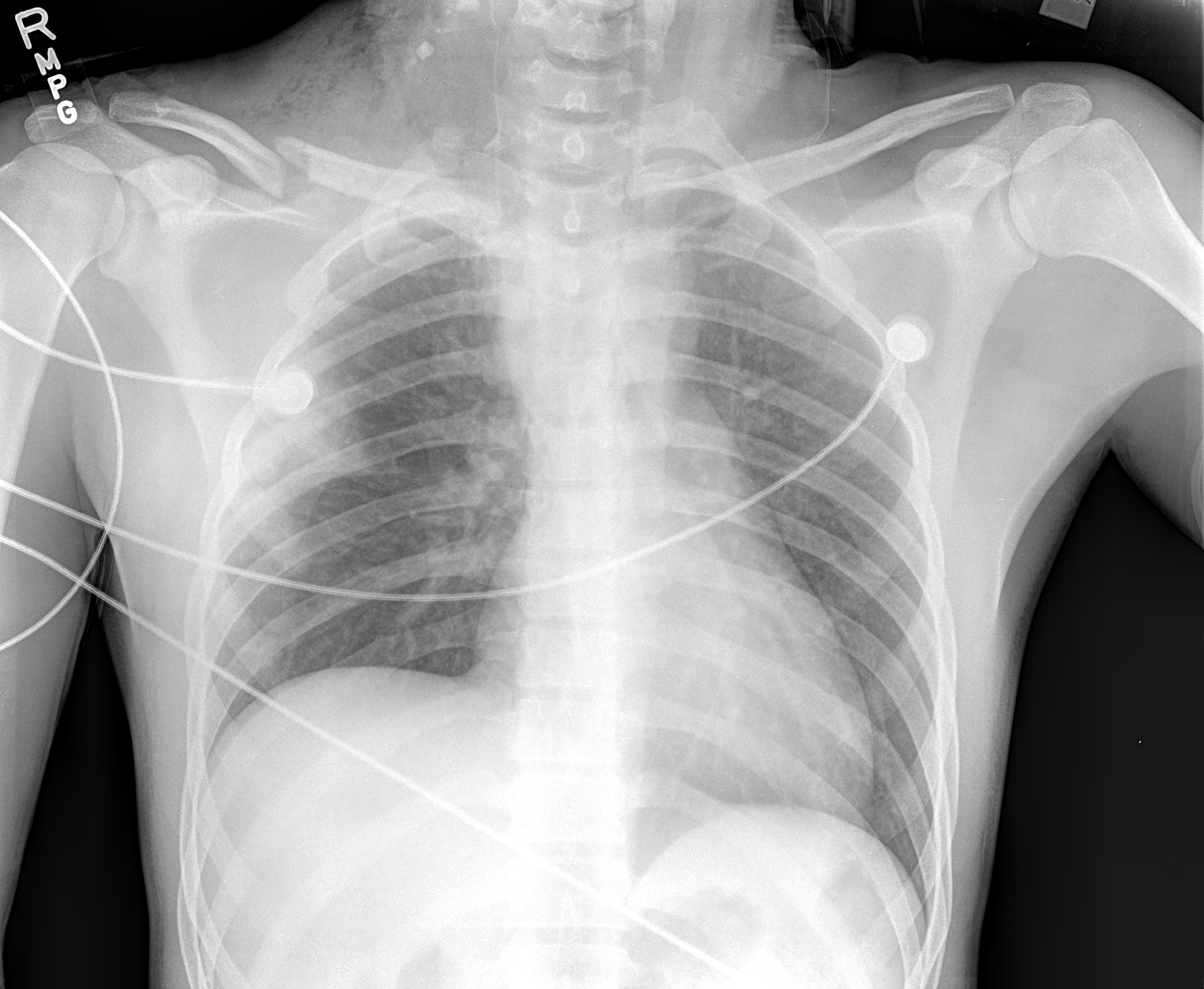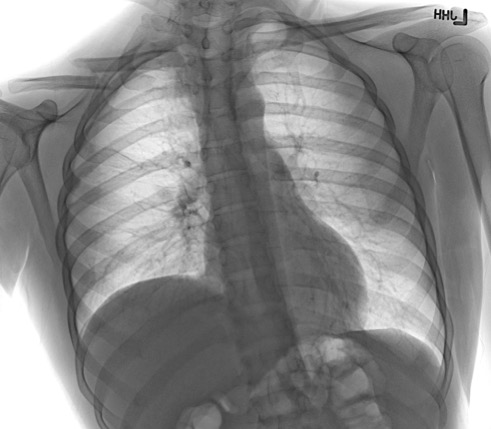[1]
Houston JG, Fleet M, Cowan MD, McMillan NC. Comparison of ultrasound with fluoroscopy in the assessment of suspected hemidiaphragmatic movement abnormality. Clinical radiology. 1995 Feb:50(2):95-8
[PubMed PMID: 7867276]
[2]
Yeh HC, Halton KP, Gray CE. Anatomic variations and abnormalities in the diaphragm seen with US. Radiographics : a review publication of the Radiological Society of North America, Inc. 1990 Nov:10(6):1019-30
[PubMed PMID: 2259759]
[3]
Kim WY, Suh HJ, Hong SB, Koh Y, Lim CM. Diaphragm dysfunction assessed by ultrasonography: influence on weaning from mechanical ventilation. Critical care medicine. 2011 Dec:39(12):2627-30. doi: 10.1097/CCM.0b013e3182266408. Epub
[PubMed PMID: 21705883]
[4]
Kunovsky P,Gibson GA,Pollock JC,Stejskal L,Houston A,Jamieson MP, Management of postoperative paralysis of diaphragm in infants and children. European journal of cardio-thoracic surgery : official journal of the European Association for Cardio-thoracic Surgery. 1993;
[PubMed PMID: 8396949]
[5]
Tripp HF, Bolton JW. Phrenic nerve injury following cardiac surgery: a review. Journal of cardiac surgery. 1998 May:13(3):218-23
[PubMed PMID: 10193993]
[6]
Bell D, Siriwardena A. Phrenic nerve injury following blunt trauma. Journal of accident & emergency medicine. 2000 Nov:17(6):419-20
[PubMed PMID: 11104246]
[7]
White JE, Bullock RE, Hudgson P, Home PD, Gibson GJ. Phrenic neuropathy in association with diabetes. Diabetic medicine : a journal of the British Diabetic Association. 1992 Dec:9(10):954-6
[PubMed PMID: 1478044]
[9]
Abbott RA, Hammans S, Margarson M, Aji BM. Diaphragmatic paralysis and respiratory failure as a complication of Lyme disease. Journal of neurology, neurosurgery, and psychiatry. 2005 Sep:76(9):1306-7
[PubMed PMID: 16107377]
[10]
Piehler JM, Pairolero PC, Gracey DR, Bernatz PE. Unexplained diaphragmatic paralysis: a harbinger of malignant disease? The Journal of thoracic and cardiovascular surgery. 1982 Dec:84(6):861-4
[PubMed PMID: 6292583]
[11]
Gibson GJ. Diaphragmatic paresis: pathophysiology, clinical features, and investigation. Thorax. 1989 Nov:44(11):960-70
[PubMed PMID: 2688182]
[12]
Czapliński A, Strobel W, Gobbi C, Steck AJ, Fuhr P, Leppert D. Respiratory failure due to bilateral diaphragm palsy as an early manifestation of ALS. Medical science monitor : international medical journal of experimental and clinical research. 2003 May:9(5):CS34-6
[PubMed PMID: 12761460]
[13]
Al-Thani H, Jabbour G, El-Menyar A, Abdelrahman H, Peralta R, Zarour A. Descriptive Analysis of Right and Left-sided Traumatic Diaphragmatic Injuries; Case Series from a Single Institution. Bulletin of emergency and trauma. 2018 Jan:6(1):16-25. doi: 10.29252/beat-060103.. Epub
[PubMed PMID: 29379805]
Level 2 (mid-level) evidence
[14]
Lisboa C, Paré PD, Pertuzé J, Contreras G, Moreno R, Guillemi S, Cruz E. Inspiratory muscle function in unilateral diaphragmatic paralysis. The American review of respiratory disease. 1986 Sep:134(3):488-92
[PubMed PMID: 3752705]
[15]
Hart N, Nickol AH, Cramer D, Ward SP, Lofaso F, Pride NB, Moxham J, Polkey MI. Effect of severe isolated unilateral and bilateral diaphragm weakness on exercise performance. American journal of respiratory and critical care medicine. 2002 May 1:165(9):1265-70
[PubMed PMID: 11991876]
[16]
Laroche CM,Carroll N,Moxham J,Green M, Clinical significance of severe isolated diaphragm weakness. The American review of respiratory disease. 1988 Oct
[PubMed PMID: 3202460]
[17]
Sandham JD, Shaw DT, Guenter CA. Acute supine respiratory failure due to bilateral diaphragmatic paralysis. Chest. 1977 Jul:72(1):96-8
[PubMed PMID: 872664]
[18]
Kumar N, Folger WN, Bolton CF. Dyspnea as the predominant manifestation of bilateral phrenic neuropathy. Mayo Clinic proceedings. 2004 Dec:79(12):1563-5
[PubMed PMID: 15595343]
[19]
Hughes PD, Polkey MI, Moxham J, Green M. Long-term recovery of diaphragm strength in neuralgic amyotrophy. The European respiratory journal. 1999 Feb:13(2):379-84
[PubMed PMID: 10065685]
[20]
Houston JG, Angus RM, Cowan MD, McMillan NC, Thomson NC. Ultrasound assessment of normal hemidiaphragmatic movement: relation to inspiratory volume. Thorax. 1994 May:49(5):500-3
[PubMed PMID: 8016774]
[21]
Nason LK, Walker CM, McNeeley MF, Burivong W, Fligner CL, Godwin JD. Imaging of the diaphragm: anatomy and function. Radiographics : a review publication of the Radiological Society of North America, Inc. 2012 Mar-Apr:32(2):E51-70. doi: 10.1148/rg.322115127. Epub
[PubMed PMID: 22411950]
[22]
Houston JG, Morris AD, Howie CA, Reid JL, McMillan N. Technical report: quantitative assessment of diaphragmatic movement--a reproducible method using ultrasound. Clinical radiology. 1992 Dec:46(6):405-7
[PubMed PMID: 1493655]
[23]
Fayssoil A, Behin A, Ogna A, Mompoint D, Amthor H, Clair B, Laforet P, Mansart A, Prigent H, Orlikowski D, Stojkovic T, Vinit S, Carlier R, Eymard B, Lofaso F, Annane D. Diaphragm: Pathophysiology and Ultrasound Imaging in Neuromuscular Disorders. Journal of neuromuscular diseases. 2018:5(1):1-10. doi: 10.3233/JND-170276. Epub
[PubMed PMID: 29278898]
[24]
Wait JL,Nahormek PA,Yost WT,Rochester DP, Diaphragmatic thickness-lung volume relationship in vivo. Journal of applied physiology (Bethesda, Md. : 1985). 1989 Oct
[PubMed PMID: 2676955]
[25]
Gottesman E, McCool FD. Ultrasound evaluation of the paralyzed diaphragm. American journal of respiratory and critical care medicine. 1997 May:155(5):1570-4
[PubMed PMID: 9154859]
[26]
Kokatnur L, Rudrappa M. Diaphragmatic Palsy. Diseases (Basel, Switzerland). 2018 Feb 13:6(1):. doi: 10.3390/diseases6010016. Epub 2018 Feb 13
[PubMed PMID: 29438332]
[27]
Simansky DA, Paley M, Refaely Y, Yellin A. Diaphragm plication following phrenic nerve injury: a comparison of paediatric and adult patients. Thorax. 2002 Jul:57(7):613-6
[PubMed PMID: 12096205]
[28]
DiMarco AF, Phrenic nerve stimulation in patients with spinal cord injury. Respiratory physiology & neurobiology. 2009 Nov 30
[PubMed PMID: 19786125]
[29]
Dubé BP, Dres M. Diaphragm Dysfunction: Diagnostic Approaches and Management Strategies. Journal of clinical medicine. 2016 Dec 5:5(12):
[PubMed PMID: 27929389]
[30]
Summerhill EM, El-Sameed YA, Glidden TJ, McCool FD. Monitoring recovery from diaphragm paralysis with ultrasound. Chest. 2008 Mar:133(3):737-43. doi: 10.1378/chest.07-2200. Epub 2008 Jan 15
[PubMed PMID: 18198248]


